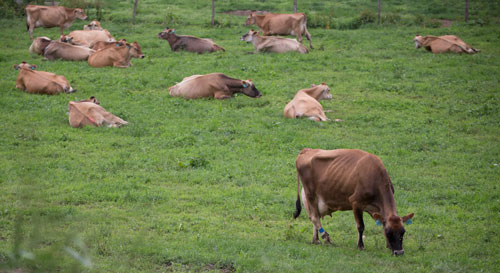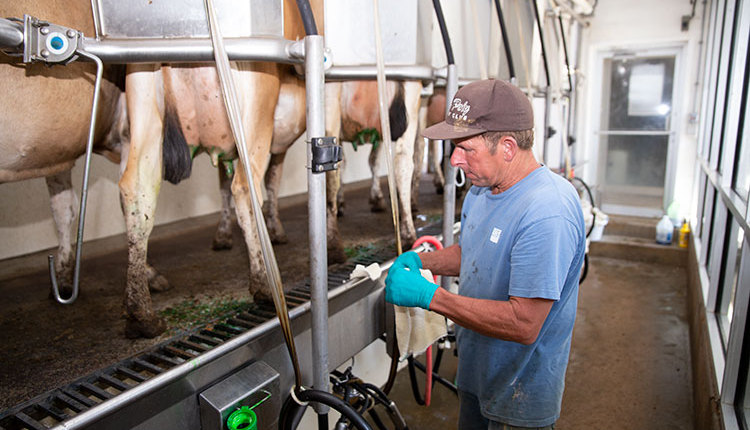
I think it is irrelevant to ask if the Omega-3 difference from grass fed cows "affects health outcomes" on the human seeking Omega-3 (over Omega-6) digestible fat structures, as you noted in your January 13 Hoard's Dairyman Intel item, "Organic's CLA: not all it's cracked up to be."
The odd person who knows to seek Omega-3 over less healthy forms will seek it across his diet, humans being omnivores. He or she will construct a diet that is higher in vegetables and digestible fiber, and lower in fast-energy-release carbohydrates and processed food built up from least-cost, volume-produced commodities.
The Omega-3 difference in the milk carries over to the Omega-3 difference in grass fed beef. The more progressive grass dairies are utilizing low fermentation baleage forage storage to extend the feed impact of grass into the winter months.
No one except the newborn of any mammal species (and veal calves) only drinks milk. The health outcome is cumulative when the opportunity to insert Omega-3 in the diet is realized.
The more specialized milk sources can be verified, the more this milk is removed from the commodity milk chain, and, thus, the price swings from "periodic overproduction" would no longer apply to dairy. If we would quit fighting research and promotion of ways to earmark detectable differences in (all) farm commodities, the entire commercial farm sector would benefit from more stable farm gate prices.
Farmers are very adept at modifying production systems to produce a specialized product. The holdup for dairy is that, for most of us, only "pooled" milk procurement that "blends" our milk with other milk lacking differential character is available.
The farm cooperative marketing structure needs revamping to make specialized milk production realizable to the consumer who is clearly seeking it in various forms.
–Greg Palen
Michigan (grass dairy owner)








